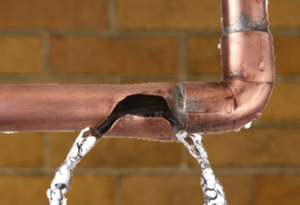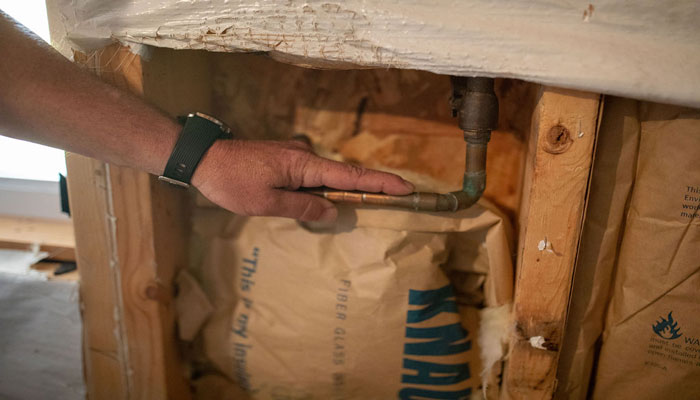Listed here down the page you will discover lots of brilliant answers around How to install a dishwasher safely.

A burst pipeline is a major emergency; you can just stand as you enjoy water you pay a lot to reunite with the earth. In even worse cases, you observe a swimming pool on your cooking area flooring, which is a wonderful trip danger, particularly if you have children around. If the pipe that burst was in your wall surfaces, problem: you may require to repaint that whole section.
Just how can a disaster like a ruptured pipe be protected against and taken care of? Well, by paying attention to your specialist emergency plumbings and following these rules.
Exactly how do I recognize when my pipes have burst?
Fluctuating water pressures
Pipelines do not simply burst in a day. You might have discovered that your kitchen area faucet or shower doesn't run right away when you turn the faucet. It might pause for a couple of seconds and after that blast you with more pressure than normal.
In various other instances, the water may seem regular initially, after that drop in pressure after a couple of secs.
Infected water
Lots of people think a ruptured pipeline is a one-way electrical outlet. Rather the contrary. As water spurts of the hole or gash in your plumbing system, contaminants find their way in.
Your water may be infected from the resource, so if you can, examine if your water container has any type of troubles. Nonetheless, if your drinking water is supplied and also purified by the city government, you should call your plumber promptly if you see or scent anything amusing in your water.
Puddles under pipelines and also sinks
When a pipe bursts, the discharge develops a pool. It might show up that the pool is expanding in dimension, and despite how many times you mop the puddle, in a few mins, there's another one waiting to be cleaned up. Typically, you may not be able to trace the puddle to any kind of visible pipelines. This is an indication to call a specialist plumber.
Wet walls as well as water discolorations
Before a pipeline bursts, it will certainly leak, many times. If this persistent dripping goes undetected, the leakage might finish right into a large gouge in your pipe. One easy means to avoid this emergency is to look out for wet wall surfaces advertisement water stains. These water spots will certainly lead you right to the leakage.
Untraceable dripping sounds
Pipe bursts can happen in one of the most unpleasant places, like within concrete, inside wall surfaces, or under sinks. When your house goes silent, you might have the ability to listen to an annoyingly persistent dripping noise. Even after you've examined your shower head and also cooking area tap, the leaking might continue.
Beloved viewers, the dripping may be originating from a pipe inside your walls. There isn't much you can do about that, other than tell a professional plumber.
Turn up the Warmth
Establish fans to blow warmth right into chilly rooms. Maintain the garage door shut. If you have actually lowered water circulation, warm one of the most susceptible pipes (normally in cellars and crawl spaces or near outside wall surfaces) with a hair clothes dryer. Leave the faucet on while you apply warmth. As you melt ice, the circulation will certainly raise. To stop pipelines from freezing, insulate your wall surfaces.
Start Doing Away With the Water
Grab the wipe, pails and also a shop vacuum to begin to do away with the water since you certainly do not desire it saturating into everything else in your home. Plus, a fast tidy up will certainly lower the possibilities of something obtaining musty.
What do I do when I spot a ruptured pipe?
Your water meter will remain to run even while your water wastes. To reduce your losses, discover the primary controls and turn the supply off. The water pipe are an above-ground structure beside your residential property.
How to Fix & Detect a Leaking Pipe
How Do I Know if a Pipe is Leaking?
Leak detection tests can help you determine if your pipe has a leak. Even if you don’t see an apparent leak, you should still conduct leak detection tests regularly to save water and money—and prevent major damage to your home.
Water meter. It can be helpful to figure out what your usual water meter usage numbers are and then monitor them regularly. To monitor your meter, first, turn off all water faucets in your home. Check the meter and write down the numbers. In a few hours, check the meter again. If the numbers have changed, you have a leak. Water gauge. Use a water gauge to test your water pressure. Your showerhead should produce a certain amount of water pressure based on its model and design. If the pressure is lower than it is supposed to be for that specific showerhead, your home likely has a leak. Puddles. Look inside your bathroom, laundry, and kitchen sink cabinets. Puddles around the cabinets or around toilets, tubs, showers, and washing machines indicate the presence of a leaking pipe. You may also notice loose tiles, peeling or flaking paint, or mold caused by water accumulation. Napkin test. Even if you don’t see any puddles, you may still have a leak. You can test for water leaks in the bathroom, laundry, and kitchen by wiping below-sink connections with a napkin, paper towel, or piece of toilet paper. If it becomes damp, you probably have a leaking pipe under the sink. Discolored walls. Walls that are discolored—usually with brown or yellow stains—or bulging might mean that they have been impacted by water damage caused by a leaking pipe. Smell. A leaky pipe will create sitting water, and over time, that water may develop a musty smell. If your home smells musty, but you can’t locate the source, it may be due to a leak. Steps for Fixing a Leaking Pipe
A leaky drain can be remedied by tightening the pipe base, replacing the drain seal, caulking the rim, and tightening the pipe nut. Similarly, a leaking toilet pipe can be treated by tightening the packing nut. You may also need to replace the valve. A leaky faucet may just need tightening or replacement of the washers. If that doesn’t work, consider replacing your faucet. If your pipe has a hole in it, you may want to use a pipe leak sealer or pipe leak tape. This quick fix for water pipe leaks can also temporarily fix a copper pipe leak. https://www.ahs.com/home-matters/quick-tips/how-to-tell-if-pipes-are-leaking/

As a keen person who reads on What to Know Before Installing a Dishwasher, I was thinking sharing that segment was a great idea. Do you know about anybody else who is excited by the subject? Why not share it. I love reading our article about What to Know Before Installing a Dishwasher.
Toilet issues? Call!